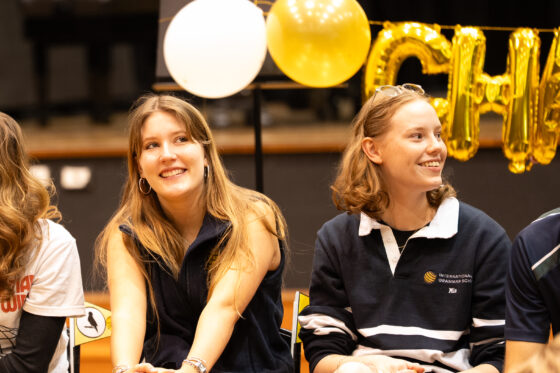“I decided to do an exploration of my and my family’s Aboriginal heritage, ancestry and identity in relation to Maria Lock(e) and the Darug people of Western Sydney,” Isabella said.
“I initially found out about my Aboriginal heritage through my grandfather who explained to me that he was given a copy of our family tree with the information given from “the Parsons family history” as his mother appeared in it.
“The family tree provides evidence that I am a direct Aboriginal descendant from Maria Lock(e), who was a Darug Aboriginal woman, and that I am therefore, also a descendant from her father “Yarramundi”, a predominant Aboriginal figure, who was described as “chief of the Richmond tribe”. Maria married Robert Locke on 26 January, 1824 at St John’s church Parramatta. This is seen as very significant, as Maria was the first Aboriginal woman to legally wed a European man in Australian history. Their daughter, Eiliza Lock(e), married William Edwin Parson in Prospect, NSW, on 17 December, 1861. This information demonstrates my Aboriginal heritage and identity from the Draug people of Western Sydney, explaining my Aboriginality.”
Isabella began her project by gathering documentation, outlining who Maria Lock(e) was, and then tracing and proving her descent from her.
“The information about my ancestry came through church and registry records as well as other genealogical sources, some of which my grandfather had discovered and some which had been supplied to him by those studying the Parsons family history.”
Isabella created two Aboriginal artworks, titled ‘The Maria box’ and ‘My Darug family tree’.
“I worked on the design and production of both of these collaboratively with Bianca Caldwell, a local Wiradjuri artist. In both artworks a range of Indigenous symbols are used,” she said.
“The Maria Box” is a demonstration of Maria, her life and her connection to my family tree. I have utilised an array of significant symbols throughout the design. An example of this is the use of yarning symbols on both sides of the box which exhibit the sharing of stories by talking and listening between my grandfather, my mother and me about our family’s past as well as the story of our identity. A fact sheet/biography of Maria Lock(e) is also included within the box to provide details on Maria and her life.”
“‘My Darug family Tree’ heavily relies on Indigenous symbolism to convey and connect my tree to my family’s Aboriginal ancestry and heritage. Pointillism (dot painting) is demonstrated throughout the artwork and is used to represent protection around Maria as well as to connect her to the land.
“Another primary symbol that is used through the artwork is the use of the eight rings/circles. This symbolically represents my family tree and my connection back to Maria Lock(e) through 8 generations via my grandfather, and my line of descendants.”
Isabella said the intent of her project was to explore her identity and also learn more about and be proud of her Darug heritage.
“I also wanted my project to encourage others to explore their family trees and learn more about their families past.”








